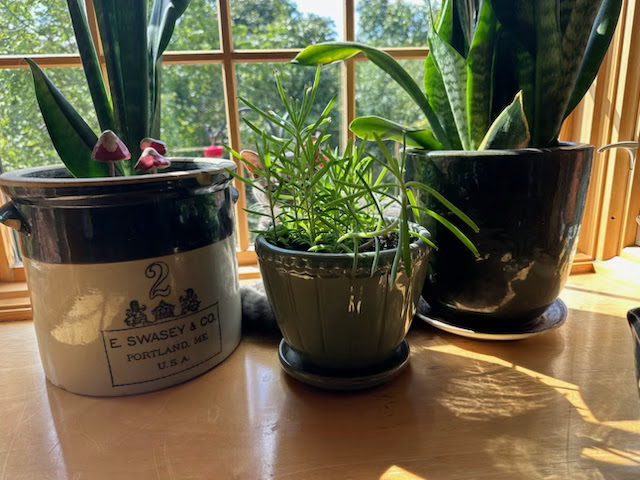Forest bathing has two meanings for us now. Last year, I would have told you that "forest bathing" is venturing into the forest with the intent of soaking up the essence of the woods. That kind of forest bathing is something we do on almost a daily basis.
I would love to tell you that our sole purpose in hiking through the woods is to absorb the healing energy found in this place undeveloped by mankind.
But if I have to be honest, our woodsy walks also hold the purpose of tiring out one extremely energetic young dog... Forrest.
And so... each day... we walk. We walk and Forrest runs - 3 to 6 miles for every one of our own.
I must admit, however, that no walk through the woods is without its benefits to us as well. There's nothing quite like being out in nature with no thoughts other than to simply observe one's surroundings.
And no trip into the woods is complete without observing the current mushroom bloom.
Every season, or for that matter - every week, new specimens erupt through the ground or appear on rotting stumps or trunks.
This tiny ear-like mushroom was growing from a branch. Although it looks big in this photo, it was only about a quarter inch from top to bottom.
As the dogs run to and fro following their noses, we stop to identify specimens and notice each little ecosphere in which they grow.
Each type of fungi needs a specific growing medium - a type of soil, or root system, or tree, etc. For example, this Gilled Bolete mushroom,
(whose top looked and felt like velvet... it's underside had yellow gills)
is typically found in the area of a beech or oak tree, and sure enough, it had erupted beneath a beech tree.
Perhaps the most prolific mushroom at this time are puff-balls. They can be found on many of the rotting stumps in the woods.
I can remember finding them in our school yard as a child. We called them "smoke bombs" - not realizing that the grayish "smoke" that billowed from them when we squeezed them was actually tiny spores - their way of reproducing.
We have also noticed this fall that there are more acorns than most years. This means that this year is probably what is called a mast year. Every few years, oak trees have a boom year and drop a lot of acorns. Scientists believe that this is the tree's way of assuring that some of the acorns will germinate and grow into new trees... producing more acorns than the local animal population needs. Associated with this actor increase is an uptick in the local animal population due to increased food source.
Circling back to that second meaning of forest bathing - it is Forrest bathing. This is also an activity that happens on a daily basis (sometimes more). In his earlier days, Forrest was notorious for finding mud puddles or digging in dirt. A daily bath was just part of the routine. However, since we have discovered how much he likes to swim, Forrest bathing has morphed into this...
Lastly, our version of Where's Waldo... instead, Where's Ivy? Look closely at the middle plant...
one of her favorite napping spots - in the window above our kitchen sink.
Silly kitty. She's finally getting used to Forrest. And Forrest has been very good about "leave it" where Ivy's concerned.

















Comments
Lisa
Julia
Mary
Forrest will have lots of energy for years to come..It's going to be a job to help him use it all up!!!
I'm happy that Ivy is adjusting..
Yes, I guess the squirrels are happy with the increase in acorns..We have a lot of Oak trees here..Acorns are no fun to walk on..
I remember the "puff balls" and squeezing them as a child..